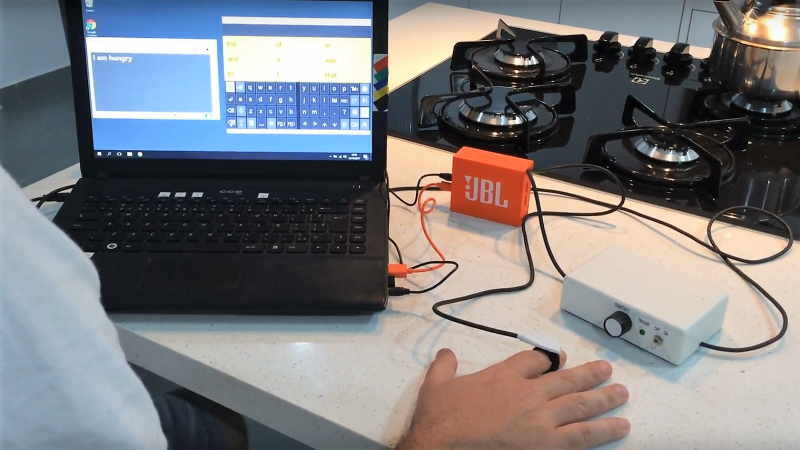A diagnosis of amyotrophic lateral sclerosis, or ALS, is devastating. Outlier cases like [Stephen Hawking] notwithstanding, most ALS patients die within four years or so of their diagnosis, after having endured the progressive loss of muscle control that robs them of their ability to walk, to swallow, and even to speak.
Rather than see a friend’s father locked in by his ALS, [Ricardo Andere de Mello] decided to help out by building a one-finger interface to a [Hawking]-esque voice synthesizer on the cheap. Working mainly with what hardware he had on hand, his system lets his friend’s dad flick a finger to operate off-the-shelf assistive communication software running on a laptop. The sensor is an accelerometer velcroed to a fingertip; when a movement threshold is passed, an Arduino sends the laptop an F12 keypress, which is all that’s needed to operate the software. You can watch it in action in the video after the break.
Hats off to [Ricardo] for pitching in and making a difference without breaking the bank. This isn’t the first expedient speech synthesizer we’ve seen for ALS patients — this one does it just three chips, including voice synthesis.
















Me too.
Awesome project, and very nicely documented!
Had the unfortunate experience of watching somebody go through ALS from diagnosis to death, it’s a terrible fate and as the OP says, happens at an incredible pace.
I had actually looked into putting together some assistive devices like this because what the family was getting through insurance was antiquated and a source of frustration. But by the time I was ready to start putting things into practice, the family told me that it was simply too late; almost all voluntary control was gone. It had only been a few months.
Well done on getting something working. Another approach I trialed with somebody who only had limited finger movement was to use the Makey Makey Go connected to some conductive foam. When the user compresses the foam with a light finger movement, this is detected by the Makey Makey Go and a keystroke generated. Wrapping the foam around something that the user can comfortably hold onto helps.
The Logitech Setpoint software also lets you map Logitech mouse or keyboard switches to the F12 key which will trigger the ACAT software. A wireless mouse secured in a suitable position near a mobile toe, knee, chin or anything will enable a more able person to speak using the software. I have a couple old age homes near me I might be able to set up a laptop with this for families to use when visiting relatives. There is one woman there who was apparently quite brilliant but can no longer speak. It would be nice to give her a voice.